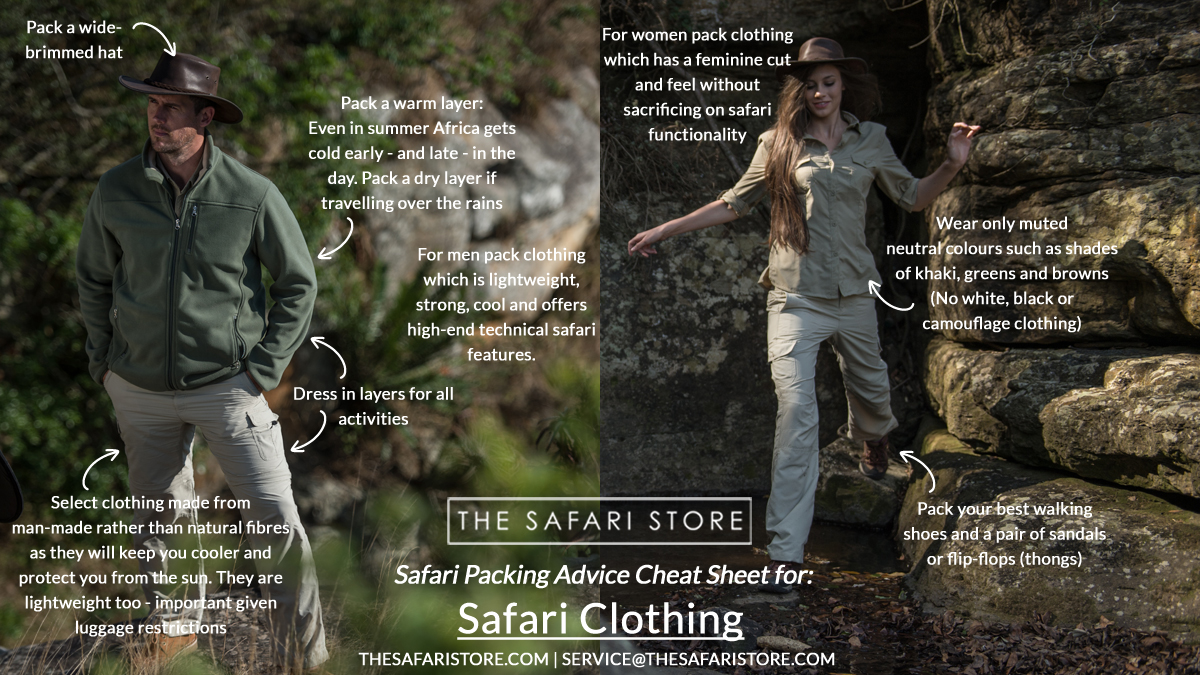To ensure comfort and blend in with the surroundings, wear neutral, lightweight, and breathable clothing on safari. Embarking on a safari adventure is an exciting opportunity to witness wildlife up close and personal.
Whether it’s exploring the vast plains of the Serengeti or venturing into the dense jungles of Borneo, choosing the right clothing is essential. Not only does it ensure comfort throughout the journey, but it also allows you to blend in with the natural environment, increasing your chances of spotting elusive animals.
We will guide you on what to wear on safari, focusing on the key factors of neutrality, lightweight materials, and breathability. By following these guidelines, you can have an enjoyable and memorable safari experience while staying comfortable and protected. So let’s delve into the world of safari fashion and explore the top clothing choices for your upcoming adventure.
Understanding The Safari Environment
Understanding the Safari Environment
When planning a safari adventure, it is important to consider the factors that will affect your choice of outfits. One crucial factor is the climate and weather conditions you will encounter during your safari. Safaris can take place in diverse environments, ranging from hot and dry savannahs to humid rainforests. Therefore, your clothing should be suitable for the specific climate of your destination.
Another key factor to consider is the importance of dressing appropriately for the wildlife experience. Safari vehicles often have open sides, allowing for unobstructed views of wildlife. This means you will be exposed to the elements and need to protect yourself from the sun, insects, and potential scratches from vegetation.
Ultimately, when choosing what to wear on safari, prioritize comfort, functionality, and protection. Opt for light, breathable fabrics that allow for easy movement. Long sleeves and pants can protect you from the sun and insects, while a hat and sunglasses provide additional sun protection. Don’t forget to wear sturdy, closed-toe shoes suitable for walking and keep in mind any cultural considerations regarding dress codes.
Essential Clothing Items For Safari
When going on a safari, it is important to have the right clothing and gear to ensure a comfortable and enjoyable experience. One of the most essential clothing items for a safari is clothing made from comfortable and breathable fabrics. This will help in regulating body temperature and avoiding discomfort during long days in the wild.
Another important aspect is selecting the right footwear. Opt for sturdy and comfortable shoes that provide good support for walking on uneven terrain. Closed-toe shoes are recommended to protect your feet from potential dangers such as thorns or insect bites.
In addition to clothing and footwear, it is also important to bring along protective accessories and gear. These may include a wide-brimmed hat to shield your face and neck from the sun, sunglasses to protect your eyes from UV rays, and a lightweight rain jacket in case of unexpected weather changes.
By following these tips and choosing the right clothing, footwear, and gear, you can ensure a comfortable and enjoyable safari experience while staying protected from the elements of nature.
Styling Tips For Safari Outfits
Styling Tips for Safari Outfits
When putting together your safari attire, it’s important to strike a balance between fashion and functionality. Opt for clothing combinations that are both stylish and practical, allowing you to comfortably explore the wilderness while looking chic.
Fashionable and functional clothing combinations:
- Pair a lightweight, breathable button-down shirt with a pair of high-waisted shorts or cropped trousers. This ensemble will keep you cool and protected from the sun.
- Layer a versatile safari jacket over a simple t-shirt or tank top. This combination adds depth to your outfit and provides an extra layer of warmth during chilly mornings or evenings.
- Opt for earthy tones and nature-inspired prints, such as olive green, khaki, or animal patterns. These colors and motifs effortlessly blend with the safari environment.
Mixing and matching safari essentials for versatile looks:
- Accessorize with a wide-brimmed hat, a lightweight scarf, and a sturdy pair of hiking boots. These items not only protect you from the elements but also add a touch of safari-style flair.
- Experiment with layering, such as pairing a safari vest over a long-sleeved top or wearing a belt to cinch in a loose-fitting safari dress.
Incorporating safari-inspired trends into your outfits:
- Consider incorporating elements like cargo pockets, utility belts, and epaulets in your outfit choices. These details evoke a safari aesthetic and add an adventurous edge to your look.
- Opt for lightweight and breathable fabrics like linen, cotton, or chambray. These materials ensure maximum comfort in the wild.

Credit: www.thesafaristore.com
Frequently Asked Questions Of What To Wear On Safari
What Are The Best Colors To Wear On A Safari?
Wearing neutral colors like khaki, beige, and green helps you blend in with the natural surroundings, making it easier to spot wildlife without disturbing them.
Do I Need To Wear Insect Repellent On A Safari?
Yes, it is recommended to wear insect repellent to protect yourself from mosquito bites, which can carry diseases. Opt for a repellent with DEET or picaridin for maximum effectiveness.
Should I Wear Sunscreen On A Safari?
Absolutely! Protect your skin from the sun’s harmful rays by applying a high SPF sunscreen before heading out on your safari adventure. Choose a water-resistant formula and reapply regularly.
Can I Wear Shorts And Sandals On A Safari?
While it may be tempting to wear comfortable clothing like shorts and sandals, it’s better to opt for long pants and closed-toe shoes to protect yourself from thorny bushes, insects, and other potential hazards.
Conclusion
Choosing the right attire for a safari is crucial to ensure comfort, functionality, and respect for the environment. Remember to opt for lightweight and breathable fabrics, neutral colors, and suitable footwear. Additionally, consider the weather conditions and pack accordingly. By following these guidelines, you can fully immerse yourself in the safari experience while being prepared for any adventure that comes your way.
Happy exploring!





